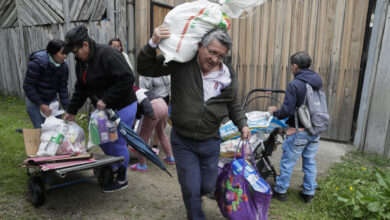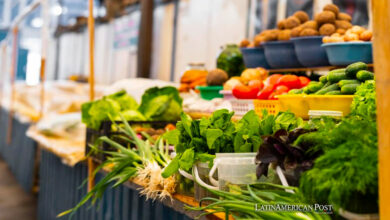130 Million Latin Americans Cannot Afford a Healthy Diet
According to a recent United Nations report, Latin America and the Caribbean is the region in the world with the most expensive healthy diet. Why is this happening and what are the implications for the population?.

Photo: Unsplash
LatinAmerican Post | María Fernanda Ramírez Ramos
Escucha este artículo
Leer en español: 130 millones de latinoamericanos no pueden costearse una dieta saludable
It is estimated that around 130 million people living in Latin America cannot afford a healthy diet. This number has increased by 8 million since 2019. The conflict in Ukraine is one of the main reasons why food prices have increased. These data were released in a new United Nations report entitled "Panorama of Food and Nutrition Security 2022".
According to the measurements on the fulfillment of the goals set for 2030, “hunger, food insecurity, childhood overweight and obesity in adults are worsening. The only recent advances at the regional level towards the nutrition goals for 2030 have been in the area of exclusive breastfeeding among children under six months and child growth retardation”. This last indicator means that children develop the appropriate weight and height for their age. Likewise, a relationship is found between the country's income level, the incidence of poverty and the level of inequality, which in turn impact on the food that the population can access.

Also read: Why did the WHO Intend to Eliminate Trans Fats in the World by 2023?
Eating healthy is expensive
It is paradoxical to think that one of the regions of the world with the greatest capacity for agriculture presents so many threats to food security. However, it is a reality that requires structural changes to transform it and enhance the food production capacity of Latin America and the Caribbean. Likewise, it is necessary that these changes are designed to guarantee access to quality nutrition for the population.
The inability to afford healthy food "particularly affects vulnerable populations, such as small farmers, rural women, and indigenous and Afro-descendant populations, who allocate a greater percentage of their income to buying food," explained Rossana Polastri, regional director of the Fund. International Agricultural Development Agency, in a press release. Lack of a healthy diet is associated with "hunger, stunted growth in boys and girls under five, and anemia in women ages 15 to 49," the report says.
However, within the same region there are important contrasts. The Caribbean is the most affected area, since it is estimated that a little more than half of the population (52%) cannot afford a healthy diet. In the case of Mesoamerica, the figure is 27.8% and in South America it is 18.4%.
What is considered a healthy diet?
A healthy diet is one that includes the necessary nutrients and micronutrients for optimal development, as well as an adequate amount of calories to meet the needs of each age and condition. According to the WHO and the FAO, healthy diets are based on unprocessed or minimally processed foods. This includes eating at least 5 servings of fruits and vegetables a day. In terms of nutrients, a diet is considered healthy when the total fat intake does not exceed 30% of the calories consumed, the saturated fat intake does not exceed 10%, and the sodium intake is less than 2 grams per day (equivalent to 5 grams of salt),” the report states. Likewise, it adds that in a healthy diet there should be a low consumption of highly processed foods and beverages, with trans fats and added sugars.
However, as we have pointed out, having access to this type of diet is not a reality for millions of people. On the one hand, there is a group of the population that, due to their income, cannot even meet the minimum consumption of calories, let alone nutrients. Added to this situation is that, in many cases, the cheapest foods, and those that are most immediately satisfying, are those with low protein, nutrient, vitamin, and fiber intake. Thus, an excess of carbohydrates is consumed. In this sense, many governments have been criticized, since the basic food baskets that are delivered to the poorest families in terms of money usually include food to satisfy hunger, but not necessarily to meet healthy nutritional requirements.
What are the challenges?
Mario Lubetkin, deputy director and regional representative of the Food and Agriculture Organization of the United Nations in Latin America and the Caribbean, indicated that it is necessary to implement measures that guarantee the transparency of food prices in the market. Likewise, it suggests "creating incentives for the diversification of the production of nutritious foods, aimed mainly at family farming and small-scale producers." On the other hand, it is essential to improve school feeding and target specific cash transfers to improve the nutrition of families that need it most.
Regarding school meals, for many minors, it is the only food they can receive. However, it is an area that is often neglected by governments and in which, from time to time, corruption scandals are exposed. The other side of the coin also shows an increase in obesity and overweight, which are also a reflection of inadequate nutrition.





